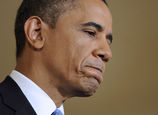
 |
On Tuesday, the ministry - along with 11 other governmental bodies - issued a guideline, saying the government encourages M&A activity in the auto, steel, cement, shipbuilding, electrolytic aluminum, rare earths, electronic information, pharmaceutical and agricultural sectors.
In the auto sector, for instance, the guidelines call for the production of the top 10 automakers to account for 90 percent of the industry's total output.
But analysts said that authorities have been advocating higher industrial consolidation for years with limited results. They added that the M&A encouragements get stronger when the industrial sectors face a downturn.
"The main problem is that the companies are not interested," said Zhang Lin, an analyst with Lange Steel Information Research Center.
"Most of China's large steel companies' core business is in the red. They lack the capital to merge with other companies. And the equipment and technology of small steel companies are generally poor, making them unattractive to large companies," Zhang said.
Regional protectionism is another major reason stifling M&A activity, said Wei Zengmin, an analyst with industrial consultancy Mysteel.
According to Wei, steel companies contribute a sizable portion of local GDP and fiscal revenue, making cross-regional mergers difficult.
The central government is aware of these obstacles.
Zhu, the ministry spokesman, stressed at Wednesday's news conference that in the M&A process, companies should play a major role.
"Governments cannot make matches for M&A deals. Instead, they should create a fair environment, which includes removing some of the institutional barriers for M&A," Zhu said.
zhengyangpeng@chinadaily.com.cn

















 Beijing style: Duck, opera, fog and cough...
Beijing style: Duck, opera, fog and cough...


![]()
